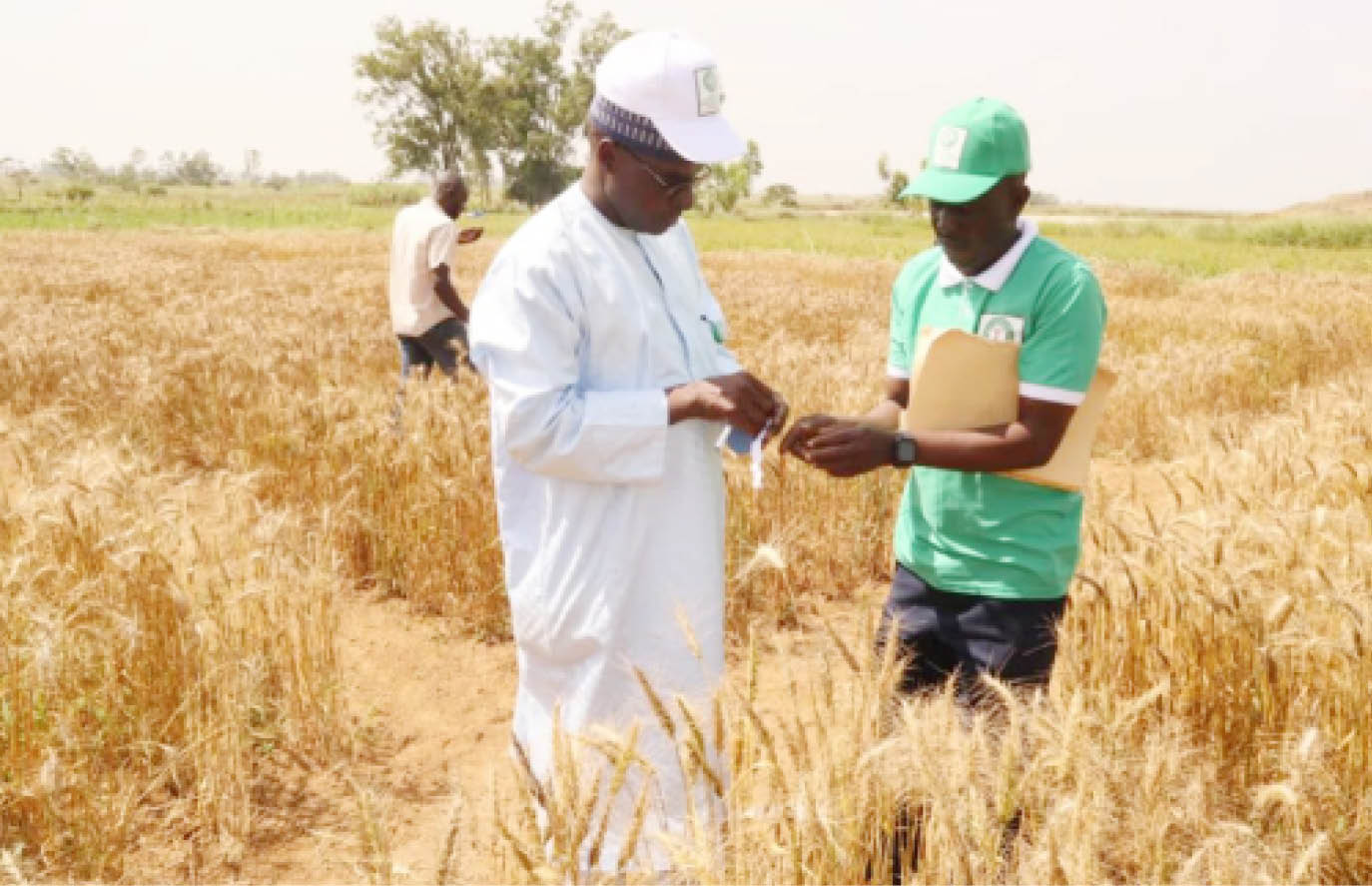Daily Trust reported recently on the major breakthrough in Nigeria’s effort to cultivate wheat during both the wet and dry seasons.
The Lake Chad Research Institute, Maiduguri, Borno State, which is responsible for the genetic improvement of wheat, millet and barley, released two major rain-fed varieties of wheat. The varieties are LACRIWHIT-8 (Crow’s) and LACRIWHIT-7 (Reyna15), which will increase domestic wheat production capacity despite yielding lower than dry season types.
For now, the two varieties can only be grown in three states which have the favourable climatic condition for wet season wheat production in the country. The states are Plateau (Jos), Taraba (Gembu) and Cross River (Obudu). These areas are the coldest places in Nigeria.
In terms of yield performance in the field, the two varieties can yield an average of 2.5 to 3.5 metric tonnes per hectare. These yields are lower than LACRIWHIT-13 (ALTAR-84), which can yield about 6,200 tonnes per hectare, LACRIWHIT-12 (6 tonnes), LACRIWHIT-11(7.1 tonnes), LACRIWHIT-10 (7.5 tonnes), LACRIWHIT-9 (6.5 tonnes), LACRIWHIT-6 (5 tonnes), LACRIWHIT-5 (6 tonnes), LACRIWHIT-4 (4 tonnes) and LACRIWHIT-3 (4.5 tonnes).
These yields, however, depend largely on the farmers’ agronomy practices.
Alhaji Mohammed Abba Sadiq, Chief Information Officer (Extension) of the Lake Chad Research Institute, told Daily Trust that the yield for the wet season varieties might be lower because the farmers during the rain-fed activities could not control the elements of production like rain.
Compared to the dry season where the farmer controls the amount of water needed on the farm, when to get the water after application of herbicides or pesticides and fertiliser, farmers in the wet season cannot as the elements are not within their control.
He, therefore, advised farmers to note the following characteristics for achieving better yields.
Seed rate
Depending on the sowing method, 100-120kg of wheat seeds per hectare maybe required. However, when broadcasting is utilised, 120kg of seeds per hectare is recommended, whereas drilling uses 100kg per hectare.
Seed treatment
The Lake Chad Research Institute advises farmers to treat (dress) seeds with Apron Star at a rate of one sachet (10g) per mudu (measure) of seeds (i.e. 10g of Apron Star for lkg of seeds).
Sowing
Wheat can be planted by either drilling or broadcasting. It is best to drill in rows 25-30cm apart. Broadcasting should be done evenly, and seeds should be completely swept into the soil.
Rain-fed wheat should be planted between July and August. The crop should be sown early for maximum production because late sown crops may result in dramatic yield losses.
